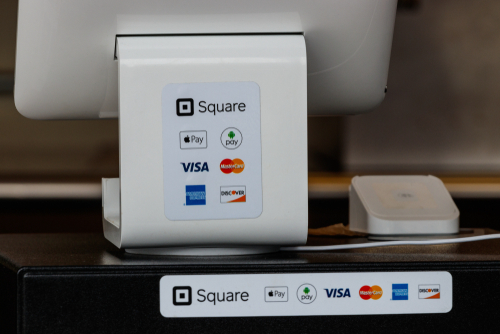Square’s new Bitcoin button has quietly dropped into the payments world, but the impact is anything but quiet. Overnight, about four million US merchants using Square suddenly gained access to a 0% fee Bitcoin checkout option that lets customers pay over the Lightning Network with instant settlement and no processing costs until 2027. After that, the fee becomes a flat 1%, still well below the typical 1.5–3% card fees most businesses are used to swallowing. The whole thing works through Square and Cash App, so instead of feeling like some quirky crypto experiment, it behaves almost exactly like tap-to-pay except it runs on Bitcoin.
The core experience is simple. A seller selects Bitcoin on the Square terminal, a Lightning invoice pops up as a QR code, and the customer scans it with Cash App or another Lightning wallet. The payment settles within seconds, and merchants can choose to keep the Bitcoin or instantly convert it into US dollars. There’s a $600 cap per transaction, which fits nearly all everyday in-store purchases, from coffee to books to haircuts. While the surface looks uncomplicated, this rollout is actually one of the biggest real-world tests Lightning has ever seen, turning millions of potential endpoints into a direct payment path through Block’s network.
This surprise move reflects years of Bitcoin obsession inside Block. Cash App already handles billions in Bitcoin trading per year, and Block operates one of the most active public Lightning nodes by capacity. The company has slowly built the infrastructure piece by piece, and now it’s flipping the switch for mainstream users. The 0% fee period is a huge incentive for merchants, especially those living on thin margins. Even after 2027, a 1% fee still undercuts standard card costs. More importantly, Bitcoin payments remove chargebacks entirely, giving small businesses a clean way to avoid one of the most frustrating parts of card processing.
Of course, the setup isn’t free in the deeper layers. Instead of making money on card fees, Block earns on Bitcoin spreads and conversions inside its ecosystem. When customers buy Bitcoin through Cash App, spend it at checkout, or when merchants convert BTC back to USD, Block captures revenue on the exchange like flow behind the scenes. For the merchant, none of this matters they simply see lower fees and fast settlement. For Block, it creates a closed-loop river of Bitcoin liquidity moving between buyers, sellers, and its own treasury systems.
Lightning itself gets pushed into a new era with this rollout. Suddenly, everyday commerce can move through Block’s channels, creating a hub-like structure that increases convenience but concentrates routing power. It’s a trade-off: better user experience but greater centralization risk. Still, for most people, Bitcoin becoming easy enough to use without thinking about nodes or channels is exactly what adoption requires. The $600 limit also helps keep Lightning traffic manageable while steering usage toward realistic, daily-spending scenarios rather than large, risky transactions.
Merchants likely to benefit first include cafés, restaurants, barbershops, clinics, and boutique retailers — essentially any business with tight margins and steady in-person traffic. As we’ve already seen with early adopters like Compass Coffee in Washington, D.C., the checkout experience is fast and smooth. The real question is whether merchants will turn the feature on and promote it. Square has made onboarding as easy as toggling a switch, and the financial incentives are solid. If customers start asking to pay in Bitcoin or merchants begin offering small discounts for BTC payments, adoption could climb steadily, though probably not explosively on day one.
One interesting angle is how merchants treat the Bitcoin they receive. Some will immediately convert it to USD to avoid volatility and keep accounting simple. Others, especially more adventurous businesses, may hold a portion as a treasury asset. Square even supports auto converting a percentage of card sales into Bitcoin, turning small businesses into subtle, daily Bitcoin accumulators. If many merchants choose this path, it could create a steady long-term bid for BTC unlike anything seen before.
For card networks and banks, this isn’t an immediate existential crisis, but it’s definitely a meaningful warning shot. Every Bitcoin transaction is one less swipe generating interchange fees. Visa and Mastercard will feel pressure to defend their rate structures and possibly innovate faster. Still, consumers are attached to card rewards and protections, so cards aren’t going anywhere soon. What we’re really seeing is the emergence of the first genuinely competitive alternative at the retail checkout layer.
Regulation remains one of the biggest wildcards. Square has launched Bitcoin payments only in the US for now, excluding New York due to licensing barriers. The tax rules in the US also treat spending Bitcoin as a taxable event, which is a headache for small purchases unless automated behind the scenes. If lawmakers introduce a de minimis exemption for low-value BTC transactions, adoption could accelerate dramatically. If not, everyday Bitcoin spending may remain more of a niche behavior for enthusiasts and early adopters.
There’s also the question of decentralization. Critics point out that concentrating Lightning activity through one corporate hub isn’t ideal for resilience or censorship resistance. But from a practical standpoint, Lightning was always likely to evolve into a network of larger hubs supporting mainstream users. Bitcoin itself remains decentralized at the protocol level, while Square simply becomes a major convenience layer running on top.
The next phase of this story will depend on a few key signals. How many merchants actually activate Bitcoin payments? Do they keep the feature on long-term? How much of the Bitcoin received gets held versus auto-sold? Will Lightning capacity grow in response, or will Block’s nodes absorb most of the activity? Will regulators ease the tax burden on small BTC payments? And how quickly will competitors respond with their own Bitcoin or Lightning integrations? These answers will determine whether this is just a headline or the early shape of a new payments era.
For everyday Bitcoin users, the experience becomes dramatically easier. If you already use Cash App to stack sats, you can now spend that Bitcoin at checkout with a quick scan. The flow stays inside one coherent ecosystem rather than forcing you through multiple exchanges and wallets. The psychological shift is significant: when Bitcoin becomes a normal checkout option right next to tap-to-pay, it stops being just a speculative investment and starts feeling like usable money.
In the end, Square’s 0% Bitcoin button isn’t a magic replacement for legacy card networks, but it is a meaningful turning point. It gives merchants lower fees, instant settlement, and a simple interface. It pushes Lightning into mainstream territory. It positions Block as a central hub for Bitcoin commerce. And it sets the stage for a future where Bitcoin payments feel ordinary rather than experimental. Whether people adopt it rapidly or slowly, the infrastructure is now live, the incentives are in place, and the shift from hype to habit has begun.






















